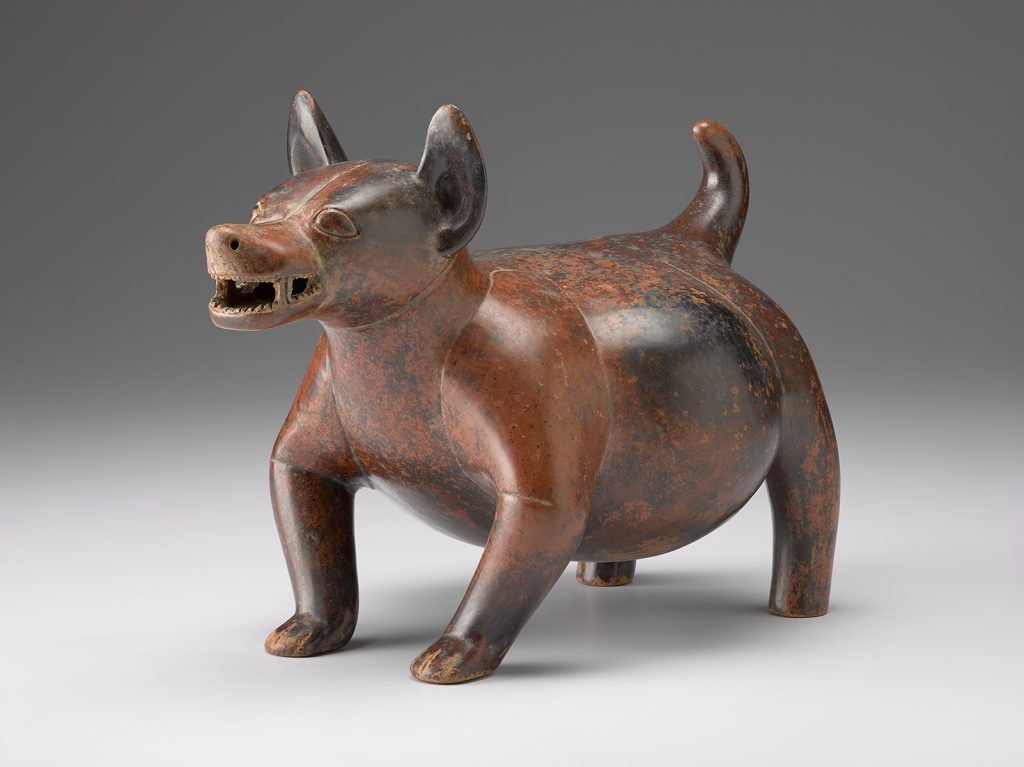NCMA Explore: Dog Effigy (Mexico) (NCMA Explore Resource)
Make a copy of this resource in slide form.
About the Culture
Colima is a small, mountainous state located on the west coast of Mexico. Most of the preserved objects created by the Indigenous people of this era come from shaft tombs, multichambered tombs dug underneath buildings.
About the Object
This hollow, clay sculpture depicts a Mexican hairless dog. In ancient Mexican Indigenous cultures, dogs were bred for many purposes, including companionship, healing, and food. They also served as guides through the underworld. These ancient dogs and their descendants are important to contemporary Indigenous culture in Mexico.
Look Closely
- What do you notice about this dog? What colors do you see? What texture do you think it has?
- How would you describe the body and facial expression of this dog? Why?
Discuss
- Why do you think this object was created?
- What purpose or significance could it have to the people of ancient Colima?
Reflect
In ancient Colima hairless dogs were sources of food in addition to having spiritual roles as guides and companions in life and death. People ate plant-based diets supplemented by protein that came from native poultry and dogs. Cows, pigs, and sheep did not live in the area. Hairless dogs almost became extinct when the region was colonized by Spain because they were linked to the persistence of pagan, or non-Catholic, beliefs. How does learning about objects from a culture help you connect to the lives of people who lived a long time ago?
Learn More
Visit the “Learn More” sidebar to find more information about the object and culture.

